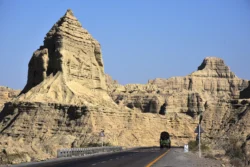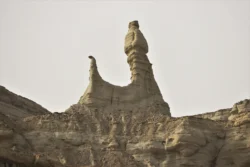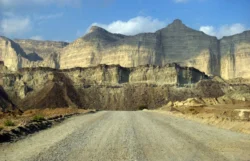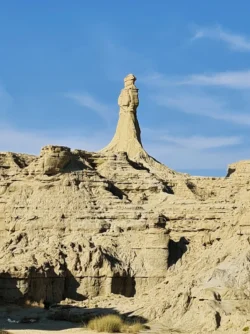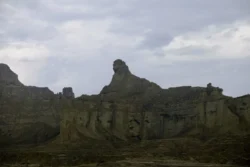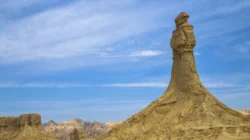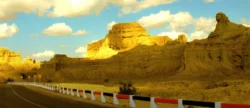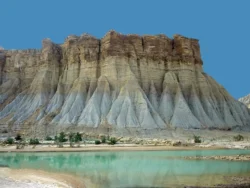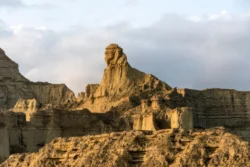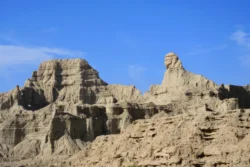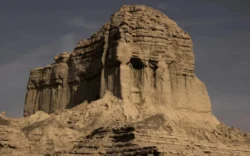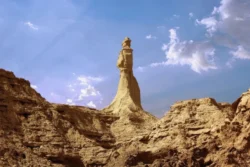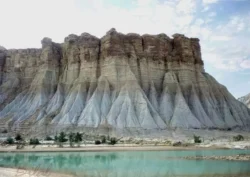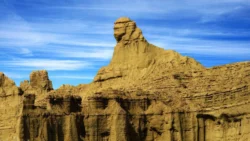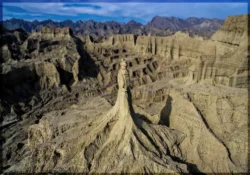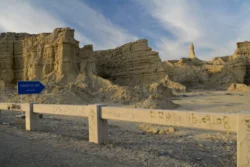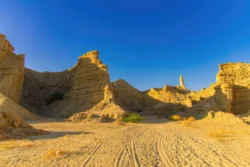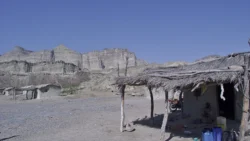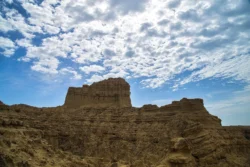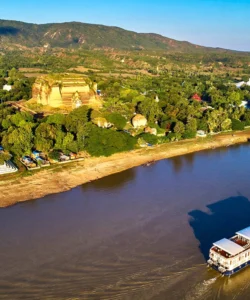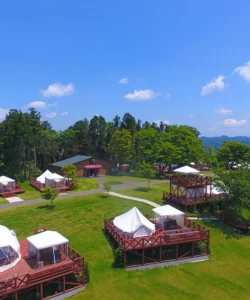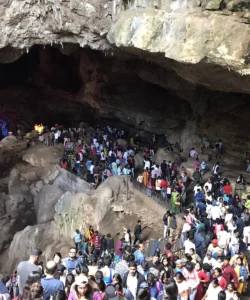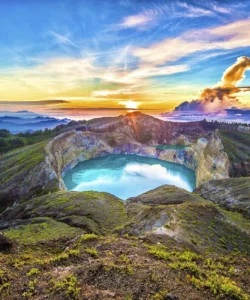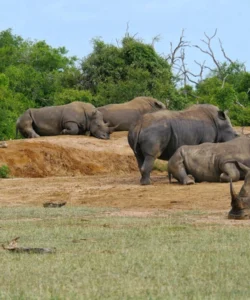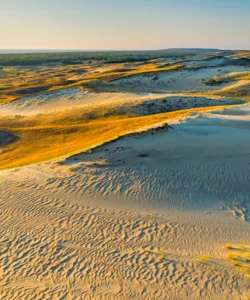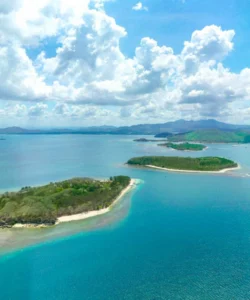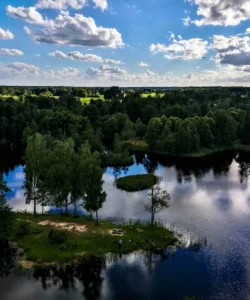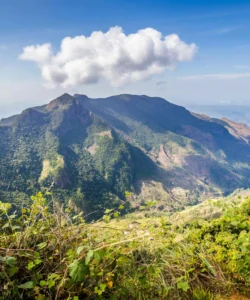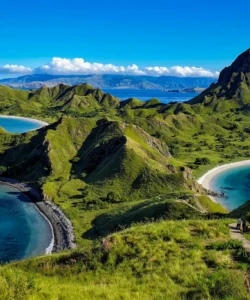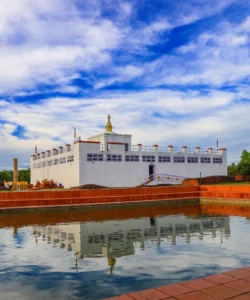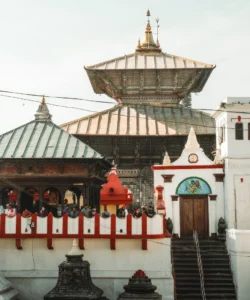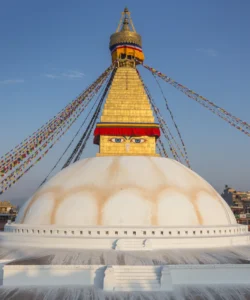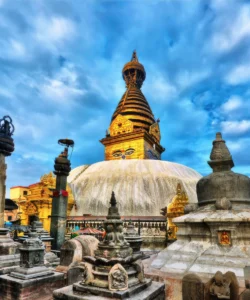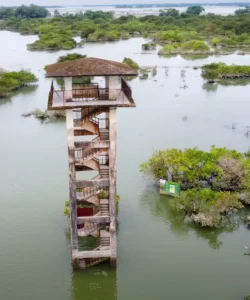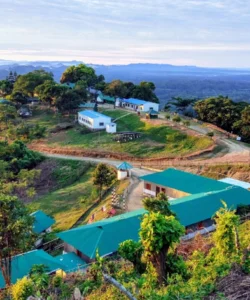Hingol National Park, often called Hungol National Park, is the largest national park in Pakistan, a truly remarkable natural wonder located along the Makran Coastal region of Balochistan. Its vast and diverse landscape, unique geological formations, and rich biodiversity make it a compelling destination for adventurers, nature lovers, and pilgrims.
Name: Hingol National Park (Urdu: ہنگول نیشنل پارک; also Hungol National Park)
Address: Makran Coastal Highway, Balochistan Province, Pakistan. It spans three districts (Gwadar, Lasbela, and Awaran) and is located approximately 190 km (118 miles) west of Karachi.
How to Get There:
Access to Hingol National Park has become significantly easier since the completion of the Makran Coastal Highway in 2004, but some areas within the park still require off-road vehicles.
- By Air: The closest major international airport is Jinnah International Airport (KHI) in Karachi. From Karachi, you would travel by road.
- By Road (Recommended):
- From Karachi: The most common way to reach Hingol is by driving along the Makran Coastal Highway (N-10). This scenic highway offers breathtaking views of the Arabian Sea and the rugged coastal landscape. The drive from Karachi to the park’s main areas (like Kund Malir Beach, Princess of Hope, Balochistan Sphinx) takes approximately 2.5 to 3 hours.
- 4×4 Vehicles: While normal vehicles can take you on the main highway, 4×4 vehicles are often needed to explore the interior of the park and access some of its specific attractions, especially the mud volcanoes or more remote areas. Many people hire a private car or join organized tours from Karachi.
- Best Time to Visit: The cooler, dry months from October to March are ideal for visiting, as Balochistan summers can be extremely hot.
Landscape and Architecture:
Hingol National Park is a dramatic and diverse landscape where arid mountains meet the Arabian Sea, featuring unique geological formations sculpted by natural forces. Its “architecture” is almost entirely natural.
- Diverse Ecosystems: The park, covering approximately 6,100 square kilometers (or 1,650 sq km by some sources), contains six distinct ecosystems, making it exceptionally unique. It includes:
- Coastal Semi-Desert: Large tracts of drift sand and arid scrubland.
- Arid Montane Ranges: Barren, rugged mountains with steep cliffs, rocky gullies, and extensive mud-rock formations formed by tectonic plate movements.
- Hingol River Estuary and Wetlands: The Hingol River, Balochistan’s longest river, flows through the park, forming an estuary as it enters the Arabian Sea. This river creates vital wetlands, oases, and freshwater pools, sustaining a surprising abundance of flora and fauna.
- Beaches: Pristine, serene beaches along the Makran Coast, such as Kund Malir Beach, which has been recognized among Asia’s most beautiful beaches.
- Unique Rock Formations: The park is world-famous for its incredible, naturally sculpted rock formations:
- Princess of Hope: A towering natural rock formation that remarkably resembles a woman looking out over the horizon. It was named by Hollywood actress Angelina Jolie during a visit in 2004.
- Balochistan Sphinx: Another awe-inspiring natural rock structure that bears a striking resemblance to the Great Sphinx of Giza. It is often called the “Lion of Balochistan.” These formations are believed to be carved by ocean winds and erosion over centuries.
- Mud Volcanoes: Hingol National Park is home to numerous active mud volcanoes, the only ones in South Asia and some of the highest-located globally. These conical formations emit methane and mud instead of lava. Chandragup is the most famous and sacred mud volcano, rising about 300 feet (91 meters). Pilgrims often visit these mud volcanoes to perform rituals.
- Canyons and Gorges: The Hingol River carves massive canyons and gorges through the mountains, providing dramatic landscapes and opportunities for hiking.
- Hinglaj Mata Mandir (Nani Mandir): This is one of the most important and ancient Hindu pilgrimage sites in Pakistan. Located in a natural cave on the banks of the Hingol River, within the park, it’s a sacred Shakti Peetha (a revered spot of Goddess Sati). Its history predates Arab invasions and is deeply embedded in the local culture, drawing thousands of Hindu and even some Muslim pilgrims annually. The cave itself is a landscape feature that takes on profound religious meaning.
- Archaeological and Historical Remains: The park contains ancient petroglyphs (rock carvings) dating back 6,000 years, along with remnants of ancient forts, watchtowers, and tombs, indicating a rich history of human presence.
What Makes It Famous:
- Unique Geological Formations: Hingol National Park is globally renowned for its extraordinary natural rock sculptures like the Princess of Hope and the Balochistan Sphinx, and its numerous mud volcanoes (the only confirmed active ones in South Asia). This combination of geological wonders is unparalleled.
- Largest National Park in Pakistan: Its immense size (6,100 sq km) makes it Pakistan’s largest national park, encompassing a vast and diverse range of ecosystems.
- Diverse Landscape in One Park: It’s unique for featuring six distinct ecosystems within its boundaries, including a coastal semi-desert, arid mountains, a riverine estuary, and pristine beaches, offering a remarkable blend of topography.
- Hinglaj Mata Mandir: The presence of this ancient and highly sacred Hindu pilgrimage site within the park makes it a unique blend of natural wonder and profound cultural/religious significance, attracting pilgrims from across the region.
- Makran Coastal Highway: The park is directly traversed by a significant portion of the Makran Coastal Highway, which is considered one of the world’s most scenic coastal drives, making the journey to the park an attraction in itself.
- Biodiversity: Despite its arid appearance, the park is a vital natural sanctuary for endangered wildlife, including Sindh ibex, Balochistan urial, Chinkara gazelle, Indian wolf, Persian leopard, marsh crocodiles, and a rich diversity of bird species (resident and migratory).
- “Undiscovered” Feel: Compared to more famous national parks globally, Hingol remains relatively off the beaten path, offering a sense of solitude and raw, untamed beauty.
Differences from Some Other Wonders:
- Geological Rock Formations + Mud Volcanoes + Coastal Desert: While other deserts exist (Thar Desert) or have unique rock formations (Grand Canyon, though different scale and type), Hingol’s particular combination of iconic natural rock sculptures, active mud volcanoes, and a coastal desert landscape (where arid mountains meet the Arabian Sea) is a highly distinctive geological and aesthetic package.
- Multi-Religious Sacred Site (Hindu Temple in a National Park): Similar to Kelimutu (local animism/afterlife beliefs) or Mount Popa (Nat worship), Hingol stands out for hosting a major, ancient, active Hindu pilgrimage site (Hinglaj Mata Mandir) within its national park boundaries, a blending of conservation and profound religious significance not common in many national parks.
- Unique Amphibious Wildlife (Marsh Crocodiles in a Coastal Desert): The presence of marsh crocodiles thriving in the Hingol River’s estuarine environment within a coastal semi-desert park is an unusual ecological adaptation that differentiates its wildlife from purely desert animals or typical forest/river species.
- Scenic Coastal Highway as Access: The park’s identity is deeply intertwined with the Makran Coastal Highway, which runs through it, allowing for easy access to some of its wonders directly from a world-class scenic drive, offering a different kind of visitor experience than parks accessed purely by off-road or trekking.
- No “Big Five” Safari Focus: While it’s a wildlife haven, its primary appeal isn’t a “Big Five” safari experience (like African parks) or guaranteed sightings of specific large mammals. The focus is more on the unique ecosystem, geological wonders, and the presence of species adapted to arid and coastal environments.
- “Princess of Hope” and “Sphinx” as Named Formations: The specific naming of its most prominent natural rock formations (“Princess of Hope,” “Balochistan Sphinx”) and their immediate recognition adds a unique pop-cultural and visually intriguing element.
Hingol National Park Photos:

